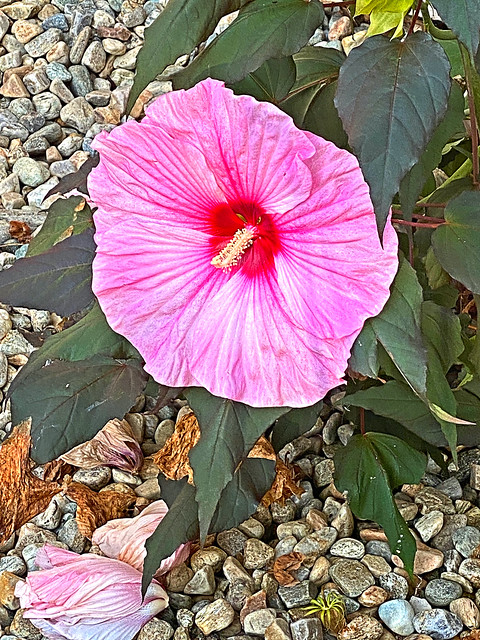Hurricane Ophelia developed as a sub-tropical storm off the coast of Florida on September 6, strengthened briefly to a Category 1 Hurricane on September 8, weakened to a Tropical Storm the next day, and then meandered up the Atlantic coast, regaining Hurricane force on September 11 and again on the 13th. As it moved slowly along its winds caused a storm surge and severe coastal flooding up into New England. We experienced mostly heavy rain for 4 days, so I have not had many photo opportunities.
Cedar Waxwings have been the most abundant bird species seen from the back yard, but they feed and roost far to other end of the clear-cut, over 50 meters (160 feet) away. I am lucky when some venture close enough for a fairly decent photo:
Before the rains came, I obtained distant shots of an adult Cedar Waxwing eating the ripe berries of Pokeweed down in the clear-cut:
A fluttering juvenile harvested berries on the wing:
Small flocks of American Robins are gathering:
They seem not to prefer the Pokeweed, but the abundant crab apples will soon be on the robins' menu:
Two Buteo raptors wheeled above against a gray sky. Note that this Red-shouldered Hawk's flight feathers exhibit a symmetrical molt pattern, allowing balanced soaring:
The other was a larger Red-tailed Hawk:
The Ruby-throated Hummingbirds had exited gradually over the past two weeks. I sighted them more frequently away from the feeders, seeking insect prey among the shrubs and flowers. They are now much more difficult to photograph:
Mourning Doves swayed in the wind and feasted on Safflower seeds:
During the rain storms, all my photos were taken through the window of our "front door." Four immature Wild Turkeys have visited several times to eat the abundant acorns on the side lawn:
They often ascended the granite slope along the garden steps just outside the window. They were too close for my fixed telephoto lens, so I captured them with my iPhone:
The bow-hunting season for turkeys began on September 15, but only "bearded" adult males may be taken, so these juveniles are safe. The beard is a tuft of hair-like feathers which protrude from the center of the upper breast and may reach a length of several inches. The beards of older male turkeys (Toms) grow at a rate of about five inches per year. Some hens may also sprout much shorter beards. These youngsters lack the bright red color of the adult male's "waddle," the flap of bare skin which hangs from their chin. They resemble adult females but have somewhat duller plumage and the brownish tips of their breast feathers are rounded rather than squared off as in adults.
I captured some interesting portraits:
Most mornings, the bad weather kept us from walking along the lake, but I did get a nice view on September 17. Soon the foliage will start turning to fall colors:
On September 21, a colorful sunset heralded the arrival of the remnants of Hurricane Ophelia:
This week's header: Sunset September 21, 2023
= = = = = = = = = = = = = = = =
My Corner of the World
________________________________________________
Please visit the links to all these posts to see some excellent photos on display
________________________________________________
































































